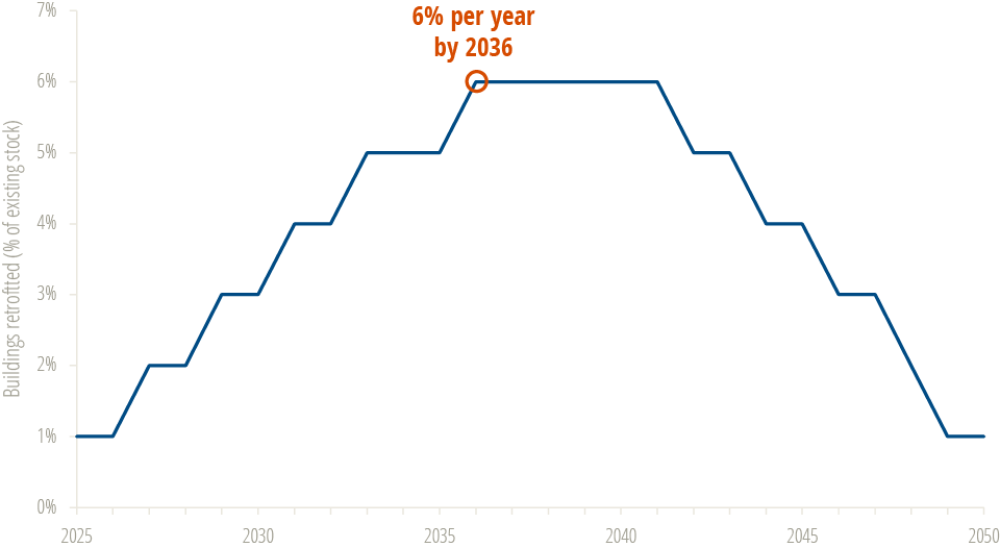
Better Buildings for All: Relieving energy poverty through deep retrofits sheds light on the urgent need for investments in deep retrofits to alleviate energy poverty among low-income households who face challenges in meeting their energy needs due to factors such as high energy bills and inefficient housing. As of today, approximately 20% of households in Canada are grappling with energy poverty, with half of them also falling into the low-income bracket.
Our new modeling underscores the necessity for an average annual investment of $2.8 billion from 2025 to 2050 to support retrofits for low-income households experiencing energy poverty. Despite previous efforts, the funding gap outlined in our 2021 Canada's Renovation Wave report persists. Federal, provincial, and utility funding has fallen short, leaving many vulnerable households without access to essential energy solutions and home upgrades.
Similar to the trajectory modelled in the 2021 Canada's Renovation Wave report, the retrofit implementation schedule increases retrofits up to a rate of 6% per year to 2036 and stabilizes at that rate for seven years before ramping down until the stock meets the 2050 net-zero emissions target.

Deep retrofits not only reduce energy costs but also improve indoor air quality, thermal comfort, safety, and resilience to extreme weather events. In light of rising energy costs and a housing affordability crisis, retrofit programs have emerged as a critical emissions reduction and climate adaptation solution. Moreover, these retrofits contribute to a more equitable and sustainable energy landscape while fostering long-term resilience for vulnerable populations.
Our report also highlights the economic benefits of investing in deep retrofits. The recommended $2.8 billion annual funding allocation is projected to result in $6.7 billion in GDP each year and create 16,300 jobs. This investment sends a clear signal to the industry, supporting the growth of retrofit supply chains and skilled labor.
Explore the report to learn more about how deep retrofits can transform lives and communities across the country.
Report recommendations
- An average federal, provincial and utility investment of $2.8 billion annually from 2025 to 2050 in retrofits for low-income households experiencing energy poverty.
- Retrofit program design delivered through methods that remove homeowner or resident burdens and accommodate retrofit-over-time schedules.
- Collaboration and coordination between senior orders of government, with aligned goals and accountability.
April 2024: The report was revised to correct data in Table 4 and Table 9.


